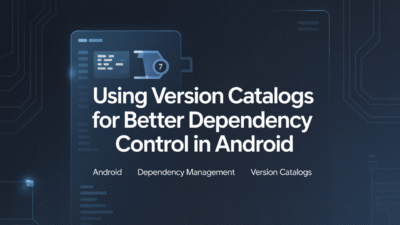In the world of Android application development, mastering the Java Virtual Machine (JVM) fundamentals is essential for building high-performance applications. The JVM plays a crucial role in executing Java programs, which are widely used in Android app development . Understanding how the JVM works can significantly impact the performance and efficiency of your apps.
What is the JVM?
The Java Virtual Machine (JVM) is an abstract machine that provides a runtime environment for executing Java applications. It acts as a layer between the Java code and the underlying hardware, enabling Java programs to run on any device equipped with a JVM . This abstraction allows developers to write code once and run it anywhere, making Java a popular choice for cross-platform development, including Android .
How Does the JVM Work?
When you compile a Java program, the source code is transformed into bytecode, a platform-independent set of instructions. The JVM then interprets this bytecode and translates it into machine-specific instructions that the computer’s processor can execute . This process involves several components:
- Class Loader: Loads class files into memory.
- Execution Engine: Executes the loaded classes.
- Memory Areas: Manages various types of memory, such as heap, stack, and method areas.
Understanding these components helps developers optimize their applications by managing memory more efficiently and avoiding common pitfalls associated with garbage collection and memory leaks .
Importance of JVM in Android Development
Android applications have traditionally been written in Java, leveraging the JVM for execution. Although newer versions of Android support Kotlin as a primary language, many applications still rely on Java, making knowledge of the JVM indispensable for Android developers . The JVM’s automatic memory management system simplifies development but requires careful consideration to avoid performance issues, especially in memory-intensive mobile applications .
Optimizing Performance with JVM Analytics
To ensure optimal performance, developers should monitor key JVM analytics, such as memory usage, garbage collection times, and thread activity. These metrics provide insights into potential bottlenecks and help identify areas where optimization efforts should be focused . By analyzing these aspects, developers can enhance the user experience and improve the overall efficiency of their applications.
Conclusion
Mastering JVM fundamentals is vital for developing high-performance Android applications. A deep understanding of the JVM enables developers to write more efficient code, manage resources effectively, and troubleshoot performance issues. As the foundation of Java execution, the JVM remains a critical component in the ecosystem of Android development, offering tools and insights that contribute to the creation of robust and scalable applications. Whether you’re working with Java or transitioning to Kotlin, familiarity with the JVM will continue to be a valuable asset in your development toolkit.
